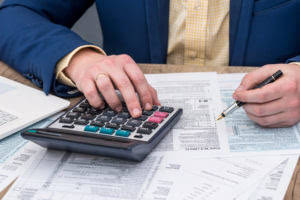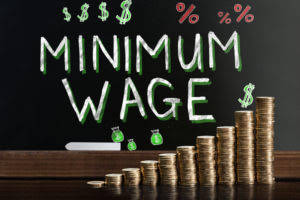Double Declining Balance Depreciation Calculator
Double declining balance is sometimes also called the accelerated depreciation method. Businesses use accelerated methods when having assets that are more productive in their early years such as vehicles or other assets that lose their value quickly. The double declining balance (DDB) depreciation method has a notable long-term impact on a company’s asset value and […]

Double declining balance is sometimes also called the accelerated depreciation method. Businesses use accelerated methods when having assets that are more productive in their early years such as vehicles or other assets that lose their value quickly. The double declining balance (DDB) depreciation method has a notable long-term impact on a company’s asset value and profitability. This accelerated depreciation technique allocates a higher depreciation expense in the initial years of an asset’s life, thus reducing its carrying value more rapidly compared to the straight-line method. Over time, this leads to a lower accumulated depreciation and higher net carrying value in the later years.
Cash Management

Our mission is to equip business owners with the knowledge and confidence to make informed decisions. In this example, the depreciation for Year 1 is half of the typical 50% rate applied in the DDB method, with the remaining depreciation distributed over Years 2 through 5. Boost your confidence and master accounting skills effortlessly with CFI’s expert-led courses! Choose CFI for unparalleled industry expertise and hands-on learning that prepares you for real-world success. The total expense over the life of the asset will be the same balance sheet under both approaches.

Mid-Year Depreciation
But before we delve further into the concept of accelerated depreciation, we’ll review some basic accounting terminology. All double declining balance rate formula methods of depreciation can affect a business’s tax picture and taxes owed. Accumulated depreciation is total depreciation over an asset’s life beginning with the time when it’s put into use. Moreover, the depreciation of buildings and furniture is calculated through a straight-line approach.

Basic depreciation rate
The latter two are considered accelerated depreciation methods because they can be used by a company to claim greater depreciation expense in the early years of the asset’s useful life. At the end of an asset’s useful life, the total accumulated depreciation adds up to the same amount under all depreciation methods. Accumulated depreciation is the sum of all previous years’ depreciation expenses taken over the life of an asset. It is presented as a negative number on the balance sheet in the asset section. Companies use depreciation to spread the cost of an asset out over its useful life.
- Then, calculate the straight-line depreciation rate and double it to find the DDB rate.
- As depreciation expenses decrease over time, net income gradually increases.
- Now you’re going to write it off your taxes using the double depreciation balance method.
- The straight-line depreciation method simply subtracts the salvage value from the cost of the asset and this is then divided by the useful life of the asset.
- Double declining balance depreciation allows for higher depreciation expenses in early years and lower expenses as an asset nears the end of its life.
- Backed by 2,700+ successful finance transformations and a robust partner ecosystem, HighRadius delivers rapid ROI and seamless ERP and R2R integration—powering the future of intelligent finance.
- It allows you to write off more of the asset’s cost in the early years of its life and less later on.
Another thing to remember while calculating the depreciation expense for the first year is the time factor. The difference is that DDB will use a depreciation rate that is twice that (double) the rate used in standard declining depreciation. In the first year of service, you’ll write $12,000 off the value of your ice cream truck. By dividing the $4 million depreciation expense by the purchase cost, the implied depreciation rate is 18.0% per year.
- Implementing the DDB method ensures compliance with Generally Accepted Accounting Principles (GAAP) while optimizing tax benefits.
- Accumulated depreciation is the cumulative depreciation expense recognized as an asset over its lifetime.
- In the world of finance and accounting, understanding how to manage and account for asset depreciation is crucial for all businesses.
- Depreciation expense under the declining balance is calculated by applying the depreciation rate to the book value of the asset at the start of the period.
- These cars are crucial for the business, but they also lose value quickly due to high mileage and wear and tear.
Why Use the Double Declining Balance Method?
- So if an asset with a 10-year life and no salvage value depreciates at 10% per year straight-line, the DDB rate would be 20%.
- For example, if the fixed asset management policy sets that only long-term asset that has value more than or equal to $500 should be recorded as a fixed asset.
- The fraction uses the sum of all years’ digits as the denominator and starts with the largest digit in year 1 for the numerator.
- Written Down Value (WDV), Straight Line Technique (SLM) Company policy does not put any restrictions on the use of any method.
- In summary, the Double Declining Balance depreciation method is a useful way to account for the value loss of an asset over time.
Recovery periods under GDS are the same as the length of time indicated in the property class (e.g., office furniture is in the 7-year property class and has a recovery period of 7 years). The exception to this is residential rental property, which has a recovery period of 27.5 years, and nonresidential real property, which has a recovery period of 39 years. The salvage value is what you expect to recover at the end of the asset’s useful life. Unlike DDB, the straight-line method spreads the depreciation of an asset evenly over its useful life.

At the beginning of the first year, the fixture’s book value is $100,000 since the fixtures have not yet had any depreciation. Therefore, under the double declining balance method the $100,000 of book value will be multiplied by 20% and will result in $20,000 of depreciation for Year 1. The journal entry will be a debit of $20,000 to Depreciation Expense and a credit of $20,000 to Accumulated Depreciation. Multiply the straight line depreciation rate by 2 to get the double declining depreciation rate. An exception to this rule is when an asset is disposed before its final year of its useful life, i.e. in one of its middle years. In that case, we will charge depreciation only for the time the asset was law firm chart of accounts still in use (partial year).
The true purpose of calculating a depreciation expense is to allow the business to set aside profits in order to be able to replace the fixed asset at the end of its useful life. With DDB, assets are depreciated more heavily in the early years, which can be beneficial for businesses in terms of deferring income tax expenses to later periods. This can result in businesses saving money upfront on asset-related expenses and using those savings to invest in other aspects of their operations. While the method is a valuable tool for reflecting the depreciation of certain assets accurately, it may not be suitable for all situations. For financial reporting, consider the appropriateness of this method for your specific circumstances and adhere to the relevant accounting standards and regulations. By correctly calculating the depreciation each year, accountants can accurately reflect the diminishing value of an asset on the company’s financial statements.
